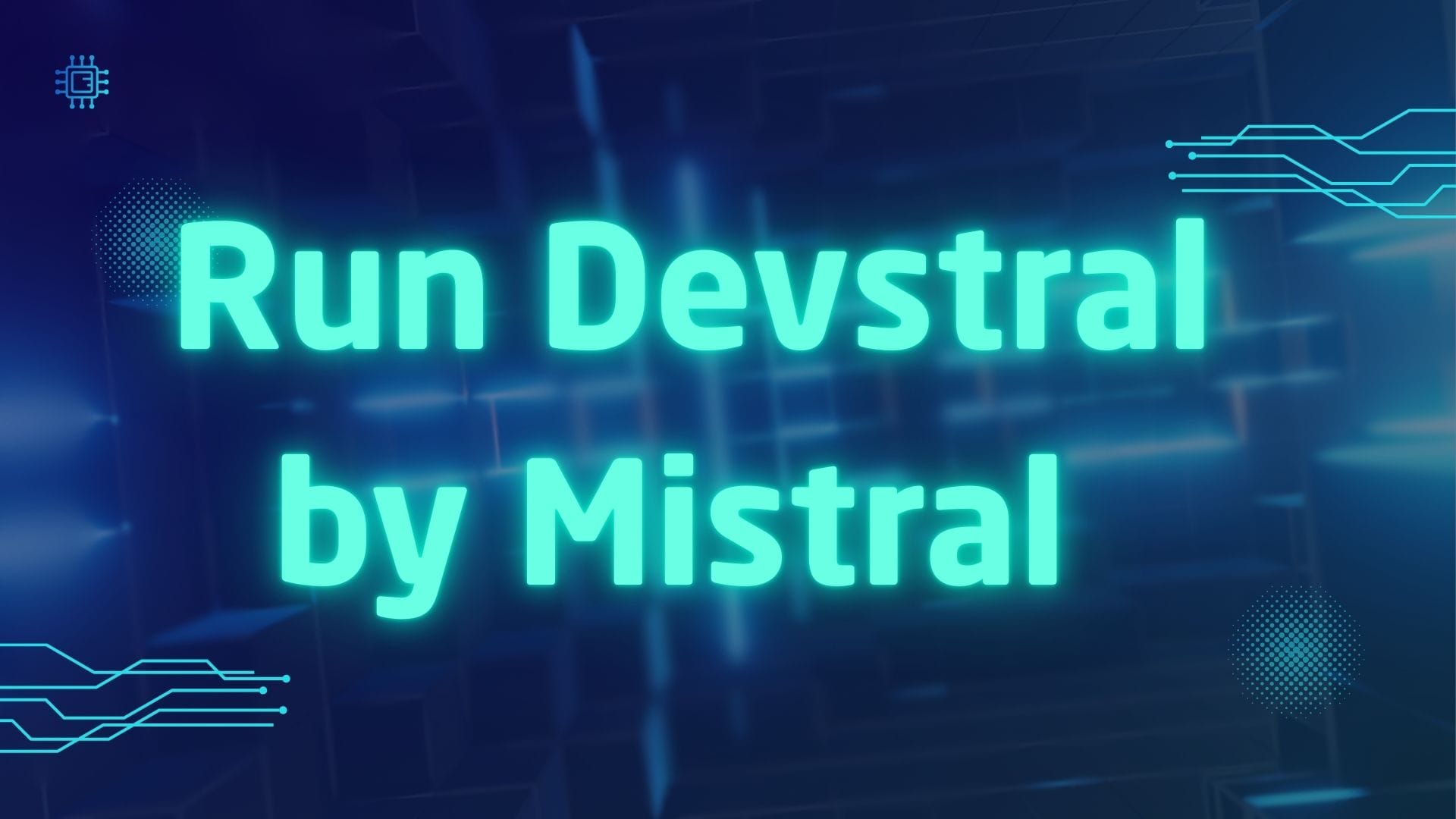Run Devstral Locally with Ollama

Running advanced AI models like Devstral on your own hardware is now practical, thanks to tools like Ollama, which simplify local deployment. This guide walks you through how to run Devstral locally with Ollama—from setup and installation to advanced configuration, troubleshooting, and real-world use cases.
What Is Devstral?
Devstral is a powerful open-source large language model (LLM) developed by Mistral AI, optimized for software engineering tasks such as:
- Code generation
- Code review
- Bug fixing
- Technical Q&A
The latest model, Devstral-Small-2505, has 24 billion parameters and can run on high-end consumer GPUs like the RTX 4090 or Apple Silicon machines with at least 32GB RAM. It’s ideal for developers aiming to automate or streamline their coding workflows.
Why Run Devstral Locally?
Running Devstral on your machine offers several key benefits:
- Privacy: Keep your code and prompts local
- Performance: No network latency, faster responses
- Cost: Avoid cloud compute expenses
- Customization: Full control over model behavior and parameters
- Offline Access: Work without an internet connection
What Is Ollama?
Ollama is an open-source tool that makes running LLMs locally simple. It handles model loading, hardware acceleration, and provides:
- A user-friendly command-line interface
- A REST API for integration with tools like IDEs, scripts, and local apps
Prerequisites
Before getting started, make sure you have:
- Hardware: 32GB RAM minimum, modern GPU (RTX 4090 or better recommended)
- OS: Linux, macOS, or Windows
- Disk Space: 50GB+ free for model files
- Internet: For initial downloads
- CLI Skills: Basic command-line knowledge
Step 1: Install Ollama
Download & Install
- Visit ollama.com and download the installer for your OS.
- On macOS, you can also install via Homebrew:
brew install ollama
- On Linux, use the provided
.debor.rpmpackages.
Verify Installation
Run:
ollama --version
If successful, you’ll see the installed version.
Step 2: Download Devstral Model Weights
- Using Ollama’s Registry (If Available)
Check for the model:
ollama list
If available:
ollama pull mistralai/devstral-small-2505
Replace the model name if different.
- Manual Download (If Not Listed)
Use Python to download from Hugging Face:
from huggingface_hub import snapshot_download
from pathlib import Path
mistral_models_path = Path.home() / 'mistral_models' / 'Devstral'
mistral_models_path.mkdir(parents=True, exist_ok=True)
snapshot_download(
repo_id="mistralai/Devstral-Small-2505",
allow_patterns=["params.json", "consolidated.safetensors", "tekken.json"],
local_dir=mistral_models_path
)
Step 3: Load Devstral into Ollama
If you manually downloaded the model:
- Ensure the required files are in the correct directory
- Use Ollama’s import or conversion tool (see official docs for updates)
Then verify:
ollama list
You should see devstral-small-2505 listed.
Step 4: Run Devstral Locally
Method 1: Command-Line Inference
ollama run devstral-small-2505 "Write a Python function to reverse a string."
Method 2: Run as Local API Server
ollama serve
Then make API calls like:
curl http://localhost:11434/api/generate \
-d '{"model": "devstral-small-2505", "prompt": "Explain the difference between a list and a tuple in Python."}'
Step 5: Advanced Configuration
- GPU Acceleration: Ollama auto-detects your GPU. Make sure your drivers and CUDA toolkit are up to date.
- Custom Parameters:
ollama run devstral-small-2505 --max-tokens 512 --temperature 0.7 "Generate a REST API in Flask."
- Multiple Models: Ollama supports managing and switching between multiple models with
ollama listandollama run.
Step 6: Integrate Devstral with Development Tools
- API Integration: Connect Devstral to tools like VS Code or custom chatbots.
- Automation: Script interactions with the API to generate code, comments, or docstrings automatically.
Step 7: Troubleshooting
Common issues:
- Model not loading: Ensure you meet RAM/GPU requirements
- Slow performance: Update GPU drivers and reduce background load
- API issues: Make sure
ollama serveis running and accessible
Step 8: Maintenance & Updates
- Update Ollama:
ollama update
- Update your models using
ollama pullor re-download from Hugging Face when new versions are released.
Step 9: Security Best Practices
- Keep models and data local; avoid exposing the API externally
- Use containers or virtual environments for isolation
- Monitor system usage, as large models consume substantial RAM and GPU power
Step 10: Practical Use Cases
- Code Generation: Boilerplate, functions, and templates
- Code Review: Feedback and improvements
- Bug Fixing: Suggest and apply code fixes
- Documentation: Generate docstrings and inline comments
Devstral Local vs. Cloud Deployment
| Feature | Local with Ollama | Cloud (API) |
|---|---|---|
| Privacy | High (local-only) | Lower (data sent to cloud) |
| Latency | Low | Higher |
| Cost | One-time hardware cost | Ongoing API charges |
| Customization | Full control | Limited |
| Scalability | Limited by hardware | High |
| Setup Complexity | Moderate | Low |
Conclusion
Running Devstral locally with Ollama gives developers privacy, speed, and flexibility in using AI for software engineering. With the right hardware, you can fully utilize Devstral’s capabilities without relying on cloud services.